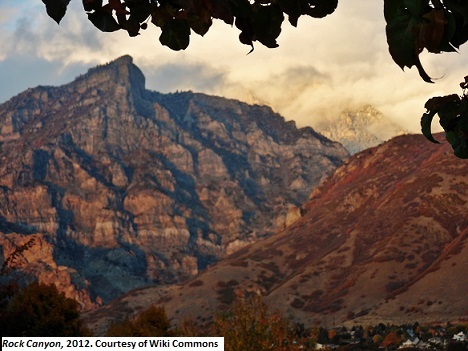Dublin Core
Title
Description
The violent 1850 massacre of Timpanogos Utes at Rock Canyon and Table Point in present-day Utah County.
In the winter of 1850, following a pitched battle on the banks of the Provo River, the remnants of Utah Valley’s Ute population scattered, hoping to escape an inflamed local Mormon militia. One cluster of Utes, led by a man known by turns as Old Elk and Big Elk, made for Rock Canyon, east of where Brigham Young University now stands, but they were quickly overtaken by their pursuers who poured lead into their ranks. Big Elk was killed along with several others in his party.
While Big Elk was being pursued toward the mountains, a second militia company dispatched from Fort Utah (today’s Provo) marched south, eventually encountering scattered bunches of Utes near Peteetneet Creek. “Here,” wrote one historian, “the violence shifted from warfare to killing.” After disarming a large band of Utes at Table Point near the southern edge of Utah Lake, the militiamen shot them down in cold blood. But it was the brutal and senseless act that followed the slaughter that is most chilling. According to multiple historical sources, both Big Elk and the Utes gunned down at Table Point were beheaded and their skulls taken as trophies. One eyewitness witnessed Big Elk’s head hanging up in Fort Utah. In an interview conducted years later, Jane Park recalled seeing his head “hung pendant by its long hair from the willows of the roof of one of the houses.” As for the Utes massacred at Table Point, both Abner Blackburn and Anna Clark Hale substantiated the fact that the Indians’ bodies had been mutilated and their heads brought back to Fort Utah. “I can never forget,” Hale remembered, “the horrible and frightening scene when the boys brought into the Fort a number of Indian heads with their nasty bloody necks and their tongues sticking out of their mouths. It was awful.”
Creator
Source
Image: Rock Canyon, Squaw Peak above Rock Canyon at sunset. The image is framed by a branch and was taken from BYU campus in Provo, Utah. 2012. Courtesy of Wiki Commons.
_______________
The best secondary accounts of the winter campaign against the Timpanogos Utes are D. Robert Carter, Founding Fort Utah: Provo’s Native Inhabitants, Early Explorers, and First Year of Settlement (Provo, Utah: Provo City Corporation, 2003), 163-243; and Jared Farmer, On Zion’s Mount: Mormons, Indians and the American Landscape (Cambridge: Harvard University Press, 2008), 71-76. The eyewitness accounts referred to in the story are Will Bagley, ed., Frontiersman: Abner Blackburn’s Narrative (Salt Lake City: University of Utah Press, 1992), 170; William Hickman and J.H. Beadle, Brigham’s Destroying Angel: Being The Life, Confession, and Startling Disclosures of the Notorious Bill Hickman, The Danite Chief of Utah (New York: George A. Crofut, 1872) 68; “Provo Pioneers of 1847,” Provo Daily Herald, 24 July 1922, 1; and Anna Clark Hale, The Memoirs of Anna Clark Hale (n.p.: printed privately, [1965]).

